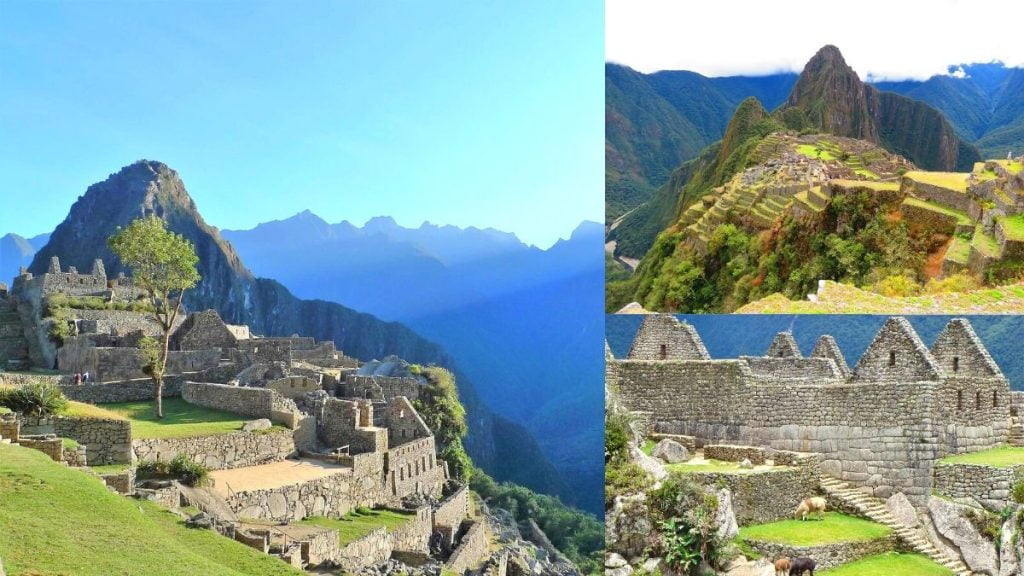Machu Picchu is thought to have been constructed around the 1450s. In a research headed by Burger in 2021, radiocarbon dating revealed that Machu Picchu was inhabited between 1420 and 1530 AD. Pachacutec Inca Yupanqui (1438–1471) as well as Tpac Inca Yupanqui (1472–1493), two renowned Inca rulers, believed to have built it. Anthropologists agree that Pachacutec authorized the development of the royal palace for him to be used as a retreat after a powerful military battle. Despite the fact that Machu Picchu is regarded a “royal” estate, this would not have been handed down the generations. Let’s now consider the Machu Picchu facts.
What is Machu Picchu?
Machu Picchu is indeed an Inca site in Peru that dates from the 15th century and is situated on a ridge between both the Huayna Picchu as well as Machu Picchu mountains. This mountain is amongst the most famous ancient monuments in the world today because to its outstanding conservation, the brilliance of its design, as well as the spectacular mountain perspective it inhabits. The location is 80,000 acres in size. Crops such as maize and potatoes were originally grown in lush greenery on the site’s outskirts.

Where is Machu Picchu?
Machu Picchu is a UNESCO World Heritage Site. This historical gem is encircled by temples, platforms, numerous water canals and therefore is situated 110 kilometers northeast of Cusco in the region of Urubamba. Machu Picchu’s Inca remains are 450 meters just above valley floor and 2,438 meters above sea level, halfway between the summits of both mountains. The Machu Picchu Quebrada is indeed halfway between the Andes as well as the Amazon rainforest. This is the most visited tourist attraction in Peru, as well as a holy Inca monument. It is situated in a stone hamlet perched on a 2,500-meter-high mountain.
Did you know about Machu Picchu Restaurant beforehand?
Because to its mountainous setting, Machu Picchu has a small number of restaurants. As a result, dining options at there are indeed restricted. In truth, there are only 2 choices: the Sanctuary Lodge Hotel’s Tinkuy Restaurant as well as the Machu Picchu snack bar. All those other establishments are in Aguas Calientes, which is 30-40 minutes outside there.
Within the ancient site, dining is absolutely prohibited; however tourists can enjoy a box lunch in a narrow area near the entrance. Freshly made box launches are available at certain resorts as well as fast food places. One such establishment is the La Boulangerie de Paris, which is run by brilliant and passionate French ex-pat.

Let’s find out now about Machu Picchu Hike
1.The Huayna Picchu Hike
This rocky mountain on the Citadel’s northern outskirts needs a 45-minute to 1.5-hour trek to its 8,900-foot summit, which is said to be where the chief priests lives. Whenever one stares up at Huayna Picchu, it appears that there is no way to get to the top by foot. The trail is achievable for most daring capable individuals and very rewarding, despite the fact that it is rather risky and very steep.
The last 50 yards near the summit are the most difficult; as the stone stairs are so huge and steep that it feels as climbing a ladder. To help, there are cables provided at several points throughout the trail. At the summit, you’ll see elaborately built Inca ruins on the cliff’s edge, as well as a spectacular bird’s eye perspective of Machu Picchu and the entry road. Because this is the most well-known trek in the Citadel, you would like to get your permission as soon as possible.
2.The Sun Gate Hike
The Sun Gate seems to be the ideal option if you are not comfy traversing the hilly inclines located on the other two summits. Because no permit is required, some people choose to walk this in combination to Huayna Picchu or Machu Picchu Mountain if time permits. Those who travel the Inca Trail to Machu Picchu would obviously hike one way of the trail. This simple climb offers a similar bird’s-eye perspective as the others but with a little less hard straight up-and-down hiking, and it’s exciting to meet all of the Inca Trail backpackers as they catch their first views of Machu Picchu.
The stone path from the major saddle to the Sun Gate climbs pleasantly for a mile or two, with several high parts and minor stairs, and returns on the very same way. Tourists can also take a 20- or 30-minute journey to the Inca Bridge, where it folds around the other side of Machu Picchu Mountain en route to the Sun Gate. However, due to the steep drop and the fact that crossing the Inca Bridge is illegal, this route is frequently bypassed to make room for other attractions.
Machu Picchu is built to withstand earthquakes.
Peru does indeed have a high level of earthquake activities in general, and Machu Picchu is situated near two fault lines. Realizing this, the Incas developed a variety of strategies to make their structures earthquake-resistant. The ashlar method, along with trapezoidal-shaped doors and windows, inward inclining walls, and bracing blocks, were among them.
Important Facts about Stonehenge Prehistoric Monument in England

